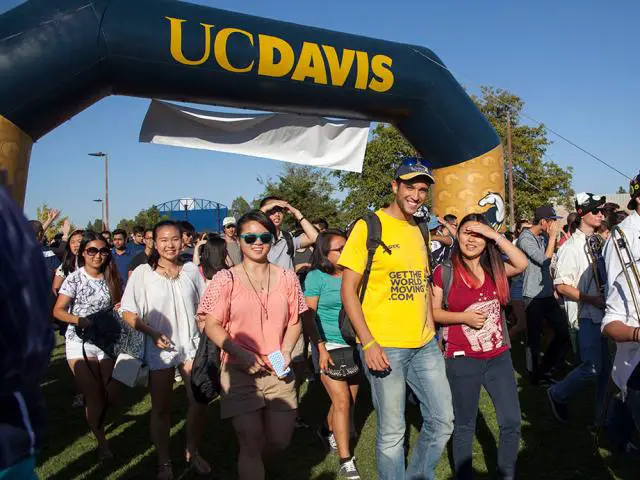With public concern about the climate crisis on the rise, some universities in the United States are looking to cut down on their carbon emissions. In California, a state already known for some of the most ambitious climate policy in the country, the University of California has set sweeping goals for emissions and waste reduction that would make it a leader among US universities in environmental standards.
The UC is one of three university systems in California and consists of 10 universities across the state including UC Berkeley and UC Los Angeles. In September of 2018, the state of California set a target of 100 percent renewable energy in the state by 2045, but the UC set its own emissions targets that September, aiming to achieve carbon neutrality in less than a seven-year time frame, by 2025.
According to Stett Holbrook, the senior communications strategist for the UC Office of the President, the UC is taking a number of steps to reach that target. The UC’s Sustainable Practices Policy encourages action UC institutions in four key areas including energy efficiency, on-campus renewable electricity, off-campus clean electricity, and on-campus combustion.
The UC has made improvements in energy efficiency since 2005 and has reduced net energy expenses by more than $200 million according to Holbrook, who told The College Post several campuses have cut their per-square-foot energy use in half between 2005 and now.
“UC adopted an updated policy in 2018 to further reduce campus energy use by 2 percent each year,” Holbrook said. “As a result, UC delivered an overall 1.9 percent annual reduction last year.”
In terms of on-campus renewable energy, the UC currently has a 45-megawatt system of renewable energy and produces more renewable energy than any university in the country according to the EPA’s Green Power Partnership rankings, though only 25 percent of the UC’s total electricity use currently comes from renewable sources. The UC is also in the process of negotiating contracts with large off-campus energy suppliers and expects to conclude those negotiations early this year.
To support continued emissions reduction efforts, the UC established the Clean Energy Optimization Pilot with the utility Southern California Edison to financially incentivize campuses to reduce their greenhouse gas emissions. The California Public Utilities Commission approved $20 million for the pilot in April 2019 and UC’s Southern California campuses are beginning to implement projects under the CEOP according to Holbrook.
“The CEOP is really at a campus level, so your baseline is set based on how much carbon you were emitting on the whole campus at any given time and the incentives are based on the net reductions in carbon,” David Phillips, the UC’s assistant vice president for energy and sustainability told The College Post. “Basically anything our campuses can do to reduce their carbon emissions will be incentivized by the utility.”
The UC also draws energy from natural gas burned on campus and hopes to reduce emissions on that front with biogas from food waste. When organic matter like food and animal waste decomposes in an anaerobic (without oxygen) environment, it produces carbon dioxide and methane, which can be used as a source of carbon-neutral energy.
“Our strategy for the natural gas emissions is to develop biomethane supplies,” Phillips said. “It’s similar to a large scale solar project where we can construct facilities that collect and clean up biomass and put it into the pipelines and then that is considered a carbon-neutral supply for the campuses.”
The UC already has two such projects up and running and recently entered a biogas contract with Anaergia for a project in Rialto, California to build one of the largest food waste digesters in the country. The UC’s goal is to draw 40 percent of its natural gas from biogas by 2025.
The UC has also been working to reduce waste or divert it to recycling across its 10 campuses since 2007 when diversion rates on most campuses were well below 50 percent and today the UC diverts 63% of the municipal solid waste it generates. Despite these reductions, however, Holbrook said the UC would likely not achieve its goal of diverting 90 percent of waste by 2020.
Waste reduction has been a point of criticism for the UC system as in one article for the San Diego Union-Tribune, which questioned the credibility of the UC’s emissions reductions targets after pointing out UC San Diego is diverting waste at a rate of just 38 percent, in contrast with the UC’s target of 90 percent waste diversion by 2020.
The article, authored by two Ph.D. students at UCSD, Tricia Light and Luke Stroth, called for continued accountability in ensuring the UC remains committed to its ambitious goals for emissions and waste reduction.
College Students Question Lifestyles, Discuss Climate Change Solutions



